Suppose you ever get confused while choosing an ideal destination for your holiday. In that case, you might consider peeking at a few salient features of Nepal and clearing your mind about enjoying a vacation in Nepal. Nepal is a beautiful country with enough to observe and experience. Depending on your preferences, different types of tours are available in Nepal. Peregrine Treks & Tours will significantly dimension the Nepal Tour Package.
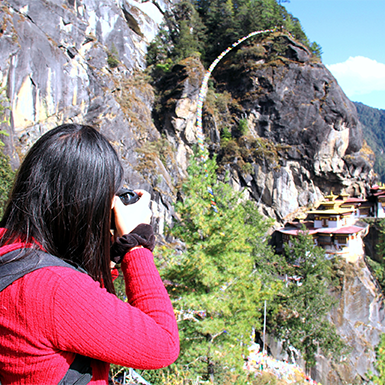
Nepal Tibet Bhutan Tour
Trip Difficulty: Easy
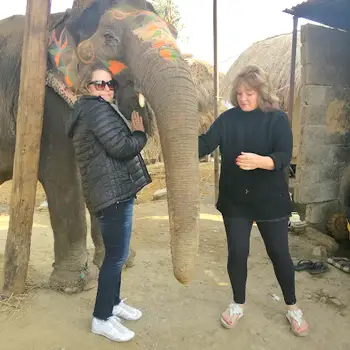
Nepal Trekking Tour
Trip Difficulty: Easy
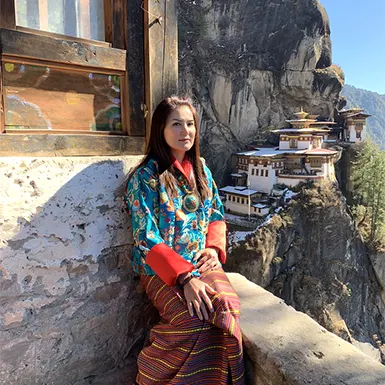
Nepal and Bhutan Tour
Trip Difficulty: Easy
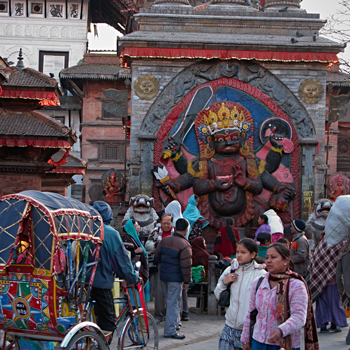
Kathmandu Pokhara Chitwan Tour
Trip Difficulty: Easy

Kathmandu Pokhara Tour
Trip Difficulty: Easy
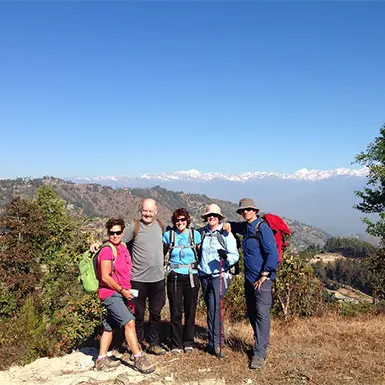
Nepal Bhutan Trekking Tour
Trip Difficulty: Moderate
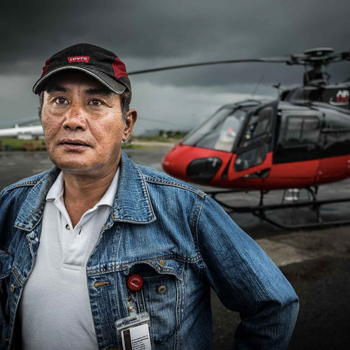
Nepal Helicopter Tour
Trip Difficulty: Easy
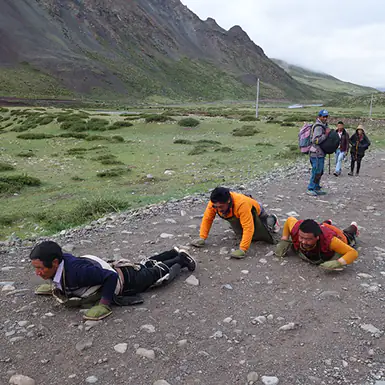
21-Day Western Tibet Tour
Trip Difficulty: Moderate
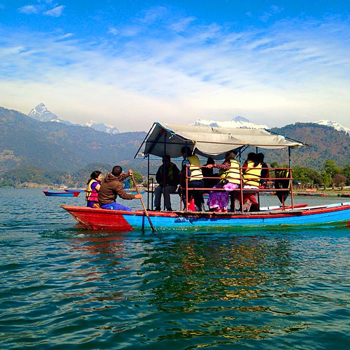
8 Days Nepal Tour
Trip Difficulty: Easy
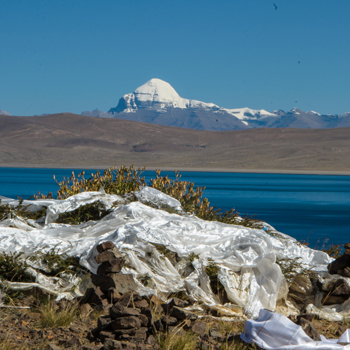
Kailash Overland Tour
Trip Difficulty: Moderate
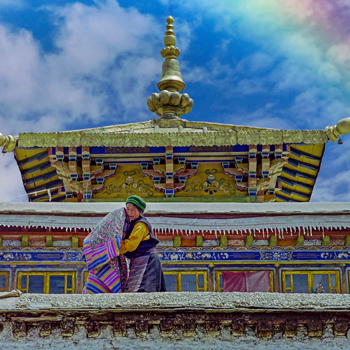
Glimpse of Nepal and Tibet Tour
Trip Difficulty: Easy
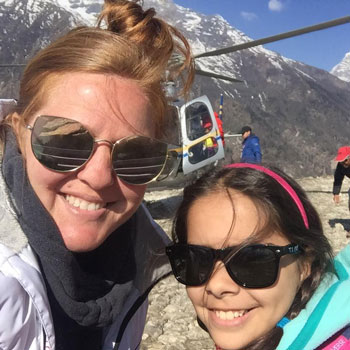
Everest Base Camp Helicopter Tour
Trip Difficulty: Easy
Trekking is one of the most popular forms of tour in Nepal. It is an excellent opportunity to understand the country and its diverse scenery. Depending on your fitness level and how long you wish to travel, there are a variety of trekking routes to choose from. Nepal’s most popular trekking routes include Everest Base Camp Trek, Annapurna Base Camp Trek, Langtang Valley Trek, and Manaslu Trekking.
If you are interested in history and culture, you should consider visiting some of Nepal’s historical places. Peregrine Treks & Tours has a Nepal Tour package where you can explore the world heritage sites of Kathmandu, Patan, and Bhaktapur. The Pashupatinath Temple, the Swayambhunath Temple, and the Boudhanath Temple are among the major cultural attractions in Kathmandu. Nepal Tour may also include visiting Chitwan National Park and searching for wildlife. A variety of species can be seen in the park, including one-horned rhinoceros, Bengal tigers, and Asian elephants. Whatever your interests, there is bound to be a Nepal Tour that will suit you.
Nepal is a wholesome combination of remarkable wilderness, adventures leading to incredible experiences, gigantic mountain peaks, massive glaciers, deep gorges, wild flora and faunas, Buddhist monasteries on the nooks of the Himalayas, prayer flags (Chorten), varieties of Hindu temples and palaces declared as UNESCO world heritage sites and plenty of national parks and lakes. It leaves no trace in your heart, alluding to returning to its natural elegance, proving Nepal’s official tourism slogan: Once is Not Enough.
Nepal Trekking Tour
Trek to the base camp of the world’s highest peak, Everest Base Camp, land on the world’s most dangerous Lukla Airstrip, and trek further to a higher altitude. Add your paths to catch the majestic sight of Mount Everest from the top of Kala Patthar or Gokyo Ri. Or you can join us to climb one of the challenging mountaineering expeditions to peaks such as Lobuche Peak, Island, or Mera Peak with our experienced mountain climbers.
Explore and experience the Sherpa lifestyles, Hindu and Buddhist villages, and temples on the foothills of mountains, visit the Annapurna region, and stay at tiny tea houses and eco-lodges, tackling your journey at the peak of trekking.
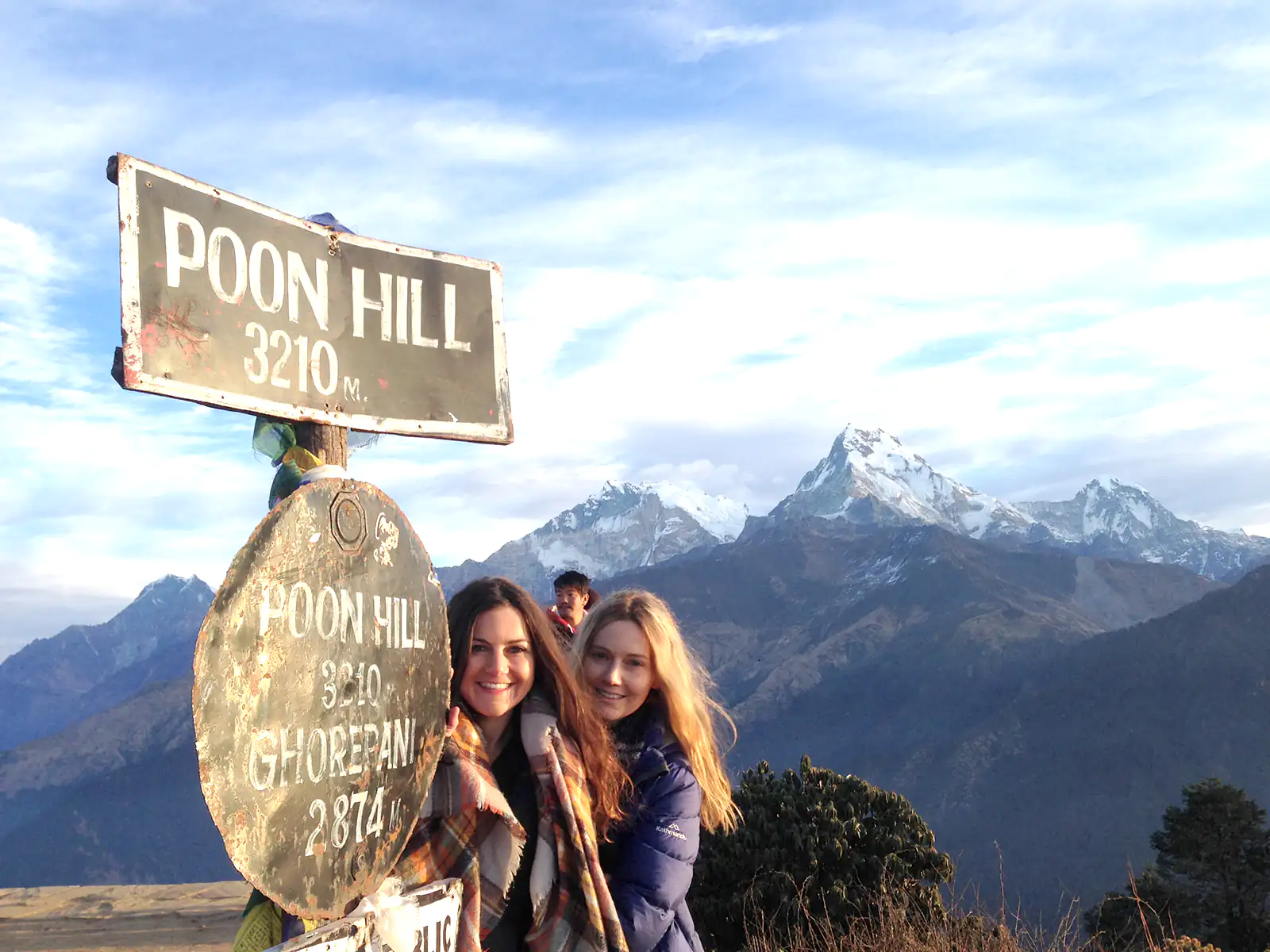
Far east Nepal gives you a trek to the base camp of the World’s third tallest peak, Kanchenjunga Base Camp, passing through the famous Hindu goddess’s temple, Mata Pathibhara Temple. You can also extend your vacation days by traversing the country on the World’s most epic trek, the Great Himalayan Trail (GHT). There are many more routes for trekking and no doubt every route will provide you with the most authentic cultural experience, mind-blowing landscapes, and great Nepalese hospitality.
After a hectic yet satisfying walk on trails, you can rest your body and mind touring Kathmandu, which has seven UNESCO World Heritage sites out of Ten in Nepal. Enjoy the valley streets, indigenous Newari culture and festivals, local cuisine, and wine. You can chill out in Lakes, Pokhara, enjoying the cool breeze from Phewa and associated sister lakes. Then, you can choose Nepal’s first National Park, Chitwan National Park, to experience Asia’s exotic and endangered wildlife and lush forest. Whether you come with your family or friends or solo, Peregrine Tour and Travel guarantees you deeply inherit the beauty of Nepal and make your travel worth it.
Local culture of Nepal
Nepal has a diverse cultural aspect as it is home to 126 castes and ethnic groups speaking 123 languages apart from the Nepali language as a mother tongue. Nepal is rich in its culture and tradition, from continuing to become BirGorkhali shoulder as a culture of Nepal’s brave hero to celebrating numerous festivals and extending agriculture as their former and significant occupancy. Nepalese people provide great hospitality and offer a variety of Nepalese cuisine to their guests, which is also a part of their local culture. It is believed and often practiced in Nepalese culture that Nepali people never say no to a guest who appears in the evening and prefers them as sent by god. So you might expect significantly to be accepted in Nepalese society and pay them regard for their humble nature.
Geography & environment during Nepal Tour Package
Nepal is a landlocked mountainous country sharing a border with China in the north and India on all other sides. Physically, Nepal is divided into three regions: the Terai region (plains), the hilly area, and the Himalayan region. Almost every land of Terai is eligible for agricultural production, whereas half of the mountainous region has very fertile land. The Himalayan region consists of the Great Himalayan Trail, including Mount Everest, the tallest mountain in the World. Varieties of weather range along with an increase in altitude in Nepal, welcoming four main seasons: winter, spring, summer, and autumn.
Shopping guide to Nepal
Most of Nepal’s corners have something you can take as a souvenir, mostly handmade with local materials. If only you stood at Thamel, Kathmandu, there would be a negligible chance of you not getting what you sought. Popular clothing items are made from sheep or yak’s wool, cashmere, and silk cloths; the most trendy nowadays are hemp (made up of weed) items. You can also find famous organic tea harvested from Eastern Nepal, locally made incense sticks, and jewelry. Many foreign tourists have experienced healing their tensions from Nepal-made singing bowls, which could be a fantastic gift for your families and friends. You can also get Thankas (embroidered on a piece of silk cloth of various gods and goddesses art) or wooden handicrafts, including a statue of local deities, unique animals, and many other attractive masks of Bhairava (dangerous form god Shiva).
Nepal festival calendar
Dashain
It is one of the biggest festivals of Hindus and Buddhists, celebrated annually for ten long days. It is believed that the Goddess Durga destroyed evil by tearing its chest with her bare hands. She is the most muscular goddess of all. On the tenth day of Dashain, people gather around and receive Tika and Jamara from their family’s eldest member, receiving blessings of prosperity. Nepalese people prepare a variety of food dishes and eat together with their joint family and go to the village to play on a significant swing to complete the ritual of leaving the land on this day.
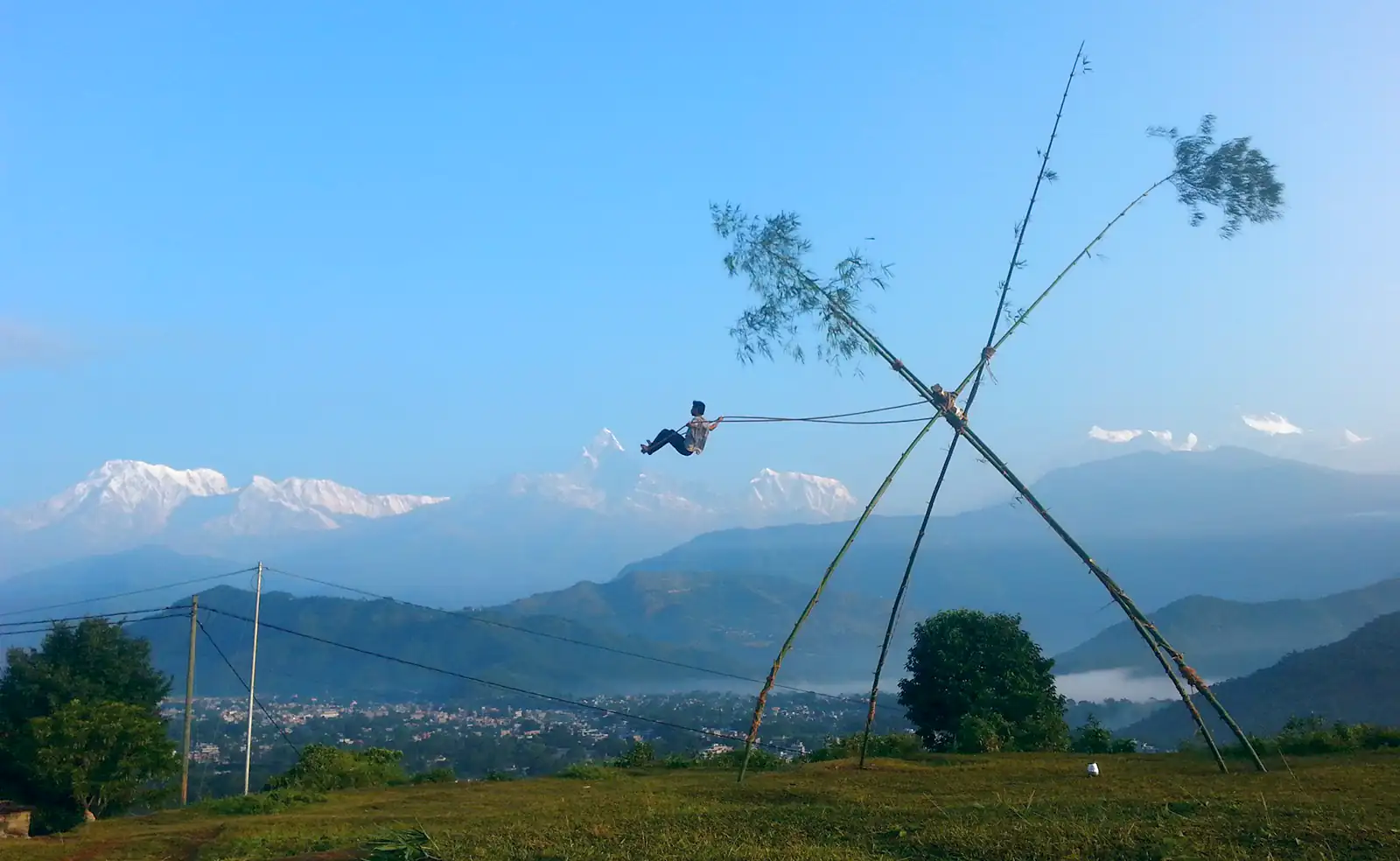
Yenya (Indrajatra Festival)
In the ethnic community of Kathmandu Valley, the Newars celebrate the Yenya festival (Indrajatra), devoted to the Lord of rain, Indra. Thousands of Newar people come out for a rally, pulling the massive wood cart along with other Nepalese people, followed by various kinds of cultural music and mask dance(LakheNach)
Tihar
Tihar is also known as the festival of lights. Every year, at the end of October, Tihar is celebrated for five days. People light their homes with decorated fairy lights and tinsel hung from their roofs, believing Goddes Lakshmi ( goddess of Wealth) will shelter their house. Various types of animals are worshipped from the start of Tihar, followed by crow, dog, ox, and cow, and on the fifth day, Nepalese girls worship their brother, also known as Bhai tika day.
Food & drink in Nepal
Nepalese people’s most common everyday meal is dal-bhat-tarkari, a plate with lentil sauce, steamed rice, and vegetable curry; apart from dal-bhat-tarkari, Chinese-influence noodles (Chowmein) and steamed dumplings (momo). Grilled meat and Nepalese-local barbecue are trendy in Kathmandu; never miss Nepalese people’s all-time favorite milk tea (chiya).
Apart from authentic Nepali food, you will also get a variety of international cuisine across the country’s central city.
Nepal Weather
Behold the beautiful country of Nepal, a paradise for nature lovers, boasting a bevy of breathtaking landscapes and climates! Nepal has something for every traveler, from the snow-capped peaks of the Himalayas to the vibrant, tropical jungles of the south. With its diverse weather patterns, no matter when you visit, you can look forward to a unique experience. In the frigid north, the snow-covered mountains of Nepal make for a winter wonderland perfect for ice mountaineering, snowboarding, and other winter sports. Meanwhile, Kathmandu Valley and the Terai Region in the south remain mild and temperate throughout the year.
The spring and autumn of Nepal are a dreamy paradise. The days are sunny and warm, with a light breeze carrying the sweet smell of flowers. The air is refreshingly cool as the night sets in, making it perfect for a romantic stroll beneath the twinkling stars. From trekking to mountain biking or simply appreciating the natural beauty, this is the best time to explore and soak up the beauty of Nepal.
The monsoon season is also a remarkable experience in Nepal. Every year, the country is blessed with much-needed rainfall. As the clouds float in, they bring a feeling of refreshment and rejuvenation that cannot be put into words. We recommend you choose the Nepal Tour Package first and write an email to us for it.
Nepal Visa
Obtaining a Nepali visa is a simple process for citizens of any nation. Upon arrival at Kathmandu’s international airport, the traveler must possess a valid passport for the following six months and two passport-sized photographs with a light background. The visa fee is payable in various foreign currencies, including Euros, Swiss Francs, Pound Sterling, US Dollars, Australian Dollars, Canadian Dollars, Hong Kong Dollars, Singapore Dollars, and Japanese Yen. Credit Cards, Indian Rupees, or Nepalese Rupees are not accepted for visa fees. Unfortunately, citizens of certain countries are ineligible for a visa on arrival and must obtain one in advance through their local Nepali embassy. These nations include:
Nigeria
Ghana
Zimbabwe
Swaziland
Cameroon
Somalia
Liberia
Ethiopia
Iraq
Palestine
Afghanistan
Visa fee for Foreign Nationals
15 Days — USD 30 per person
30 Days — USD 50 Per person
90 Days — USD 125 per person
Time and Business Hours in Nepal
Nepal is 5 hours and 45 minutes ahead of GMT! From Sunday through Friday, government offices will be on the clock from 10 am to 5 pm, and banks are open from 9 am to 3 pm; some banks will be open until noon on Saturdays. Embassies and international organizations are busy on weekdays from 9 am to 5 pm. Most shops will start to open around 10 am and close up shop at 8 pm, taking a break on Saturdays. Government offices and banks close on all public holidays, while businesses usually close on the major ones only.
Travel Insurance
Travel Insurance is not mandatory for the Nepal Tour Package. When visiting Nepal, it’s essential to ensure you are adequately covered should anything go wrong! That’s why it’s essential to consider purchasing travel insurance for your trip to Nepal. You’ll want to be prepared for anything from lost luggage to medical emergencies, from the monsoon season to the possibility of altitude sickness. Travel insurance is a great way to ensure you’re covered in an emergency so you can travel with peace of mind and make the most of your vacation. With so many coverage options available, you’ll be able to find the right plan for your travels.
Safety Guidelines for Nepal Tour Package
Despite what the international media might present, Nepal is a safe destination for foreigners, and many return repeatedly. To ensure a safe and enjoyable trip, please take a moment to review our safety guidelines designed to ensure that your travels to Nepal are stress-free and worry-free.
- Finding a reputable travel/trekking agency to explore Nepal is necessary! For a successful trek, always select a licensed and conscientious trekking company. Going on a trek alone is not recommended, so always team up with a guide.
- Uncover the vital details about Nepal’s climate, temperature, and atmosphere. Additionally, it is essential to become informed about the varied geographic nature of this nation.
- For those planning an extended excursion to Nepal, register with your nation’s consulate or embassy to ensure a hassle-free journey!
- Chat with fellow adventurers, inhabitants, or tourist info desks to determine which regions are secure to explore and areas to steer clear of. Several mountain passes in Nepal are not advisable for the average trekker.
- Keep your treasured possessions out of sight for safety.
- Ensure that your passport, cash, and other vital possessions remain in a sacred spot throughout your entire journey. Every hotel has a safe, allowing you to securely store your valuables while you’re away on your trek.
- Familiarize yourself with the trekking/travel agency’s policies that you accepted.
- Gather all the vital information necessary for your desired activities.
- If there is an unforeseen situation while trekking, don’t hesitate to contact your travel agency. They are always standing by to lend a helping hand!
- Don’t flaunt lavish trinkets; keep your money pouch tucked away. Fortunately, criminal activity is rare in the country, particularly for visitors.
Tipping for Nepal Tour Package
Tips are not obligatory; no one can compel you to give them. Service providers don’t expect tips, as it’s up to the customer to decide whether they’d like to bestow a tip or not. Nevertheless, in most cases, the service givers anticipate a gratuity even though it’s not verbally requested. Tips are generally given to those directly involved in your service. This could include a tour guide, hotel staff, driver, and trekking companions who help carry your belongings. All these individuals should receive a tip as a token of appreciation.
We suggest giving at least 100 rupees to the bellboy or housekeeper, a small amount compared to one dollar. The tip amount may vary depending on the services provided. Some travelers may give more than 10% of their trip expenses. As an example, if you’re going on a seven-day trek, it’s recommended that you give around ten dollars per day, or a total of seventy dollars, to the guide. Ultimately, it’s up to you to decide whether or not to give a tip.
Bargaining when shopping in Nepal
Bargaining when shopping in Nepal is an enjoyable and essential part of the experience. Before you start shopping, it’s important to research the prices of the items you’re looking for. That way, you can better understand what a reasonable price is and isn’t. Additionally, it’s essential to be respectful and polite when bargaining. Smiling and speaking softly often go a long way when trying to get the best price. You can go shopping during the Nepal Tour Package.
Start by offering a lower price than the seller is asking for, but not too low – remember that for most Nepalese, bargaining is less about making a sale and more about the negotiation process. Be prepared to haggle for a while, and don’t be afraid to walk away if you’re not getting the deal you want. It might feel uncomfortable or intimidating, but it’s all part of the process. Don’t be afraid to be firm and remain courteous- after all, you’re engaging in a centuries-old tradition that is part of the country’s culture.
The best experience we had with Peregrine was the whole tour of the Annapurna Base Camp Trek was tailor-made for our requirements; all our requests were reviewed, discussed, and accepted and, in some instances, with a better recommendation.
More Reviews




